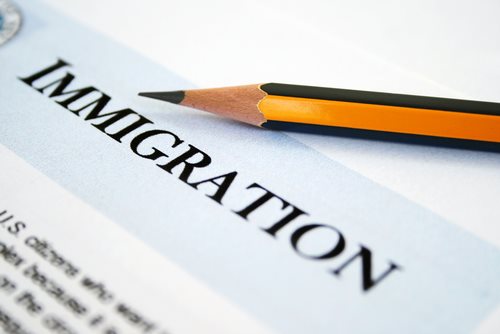Shocking Border Control Updates: New Policies Transforming Security Landscape

In recent months, border control policies across various nations have undergone significant transformations, prompting widespread discussions about their implications for national security and immigration enforcement. As governments grapple with the complexities of migration, security threats, and public health concerns, new strategies are being implemented that promise to reshape the landscape of border management. This article delves into the recent updates in border control, examining their implications, key policy changes, technological advancements, international cooperation, public response, and future outlook.
Overview of Recent Border Control Updates and Their Implications for National Security
The latest updates in border control policies reflect a growing recognition of the multifaceted challenges that nations face in securing their borders. Governments are increasingly prioritizing national security while balancing humanitarian concerns and economic needs. Recent measures include enhanced vetting processes, increased funding for border security infrastructure, and the establishment of rapid response teams to address emerging threats. These changes aim to deter illegal immigration and trafficking while ensuring that legitimate travelers can cross borders efficiently. However, the implications of these policies extend beyond immediate security concerns, raising questions about civil liberties, human rights, and the potential for increased tensions between nations.
Key Policy Changes: Analyzing the Shift in Immigration Enforcement Strategies
A notable shift in immigration enforcement strategies has emerged, characterized by a move towards more stringent measures and a focus on technology-driven solutions. Policies such as expedited removal processes, increased penalties for illegal crossings, and the expansion of detention facilities have been implemented in several countries. Additionally, some governments are adopting a more proactive approach by collaborating with local law enforcement agencies to identify and apprehend undocumented immigrants. These changes reflect a broader trend towards prioritizing enforcement over integration, which has sparked debates about the long-term consequences for immigrant communities and the overall social fabric of nations.
Technological Advancements: How Innovation is Reshaping Border Security Measures
Technological innovation is playing a pivotal role in transforming border security measures. Governments are increasingly leveraging advanced technologies such as biometric identification systems, artificial intelligence, and drone surveillance to enhance their border control capabilities. Biometric systems, for instance, allow for more accurate identification of travelers, reducing the risk of identity fraud and improving the efficiency of processing at border checkpoints. Additionally, AI-driven analytics are being utilized to predict and respond to potential security threats in real-time. While these advancements promise to bolster security, they also raise concerns about privacy and the potential for misuse of personal data, necessitating a careful balance between security and civil liberties.
International Cooperation: The Role of Global Partnerships in Border Management
In an era of globalization, international cooperation has become essential for effective border management. Countries are increasingly recognizing that border security is not solely a national issue but a global challenge that requires collaborative solutions. Bilateral and multilateral agreements are being forged to share intelligence, coordinate enforcement efforts, and streamline processes for legitimate travelers. Initiatives such as joint training exercises and information-sharing platforms are enhancing the capacity of nations to respond to cross-border threats. However, the effectiveness of these partnerships hinges on mutual trust and the willingness of countries to address underlying issues such as economic disparity and political instability that drive migration.
Public Response: Evaluating the Impact of New Policies on Communities and Travelers
The public response to recent border control updates has been mixed, with communities and travelers expressing a range of opinions on the implications of these policies. While some individuals support stricter enforcement as a means of enhancing national security, others voice concerns about the potential for discrimination, racial profiling, and the erosion of civil liberties. Advocacy groups have raised alarms about the humanitarian impact of increased detention and deportation rates, particularly on vulnerable populations. Travelers have also reported experiencing longer wait times and increased scrutiny at border crossings, leading to frustration and uncertainty. As these policies continue to evolve, it is crucial for governments to engage with communities and address their concerns to foster trust and understanding.
Future Outlook: Predicting the Long-Term Effects of Transformative Border Control Policies
Looking ahead, the long-term effects of transformative border control policies remain uncertain. While the immediate goal of enhancing national security may be achieved, the broader implications for immigration patterns, international relations, and social cohesion warrant careful consideration. As countries navigate the complexities of migration in a rapidly changing world, there is a risk that overly stringent measures could lead to increased tensions and push factors that drive individuals to seek alternative routes. Furthermore, the reliance on technology raises questions about the sustainability of these solutions and their impact on civil liberties. Policymakers must strike a delicate balance between security and humanitarian considerations to ensure that border control measures are effective, equitable, and respectful of human rights.
In conclusion, the recent updates in border control policies signify a pivotal moment in the ongoing discourse surrounding national security, immigration enforcement, and international cooperation. As governments implement new strategies and leverage technological advancements, the implications for communities, travelers, and global partnerships will continue to unfold. It is imperative for policymakers to remain vigilant in addressing the challenges posed by these changes while fostering an inclusive dialogue that prioritizes both security and human rights. The future of border management will depend on the ability of nations to adapt to evolving circumstances while maintaining a commitment to the principles of justice and equity.

















